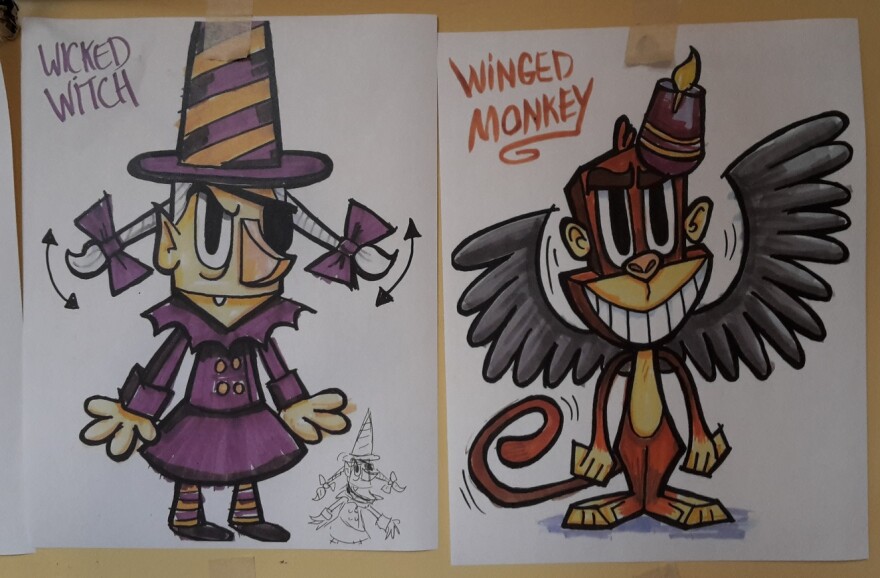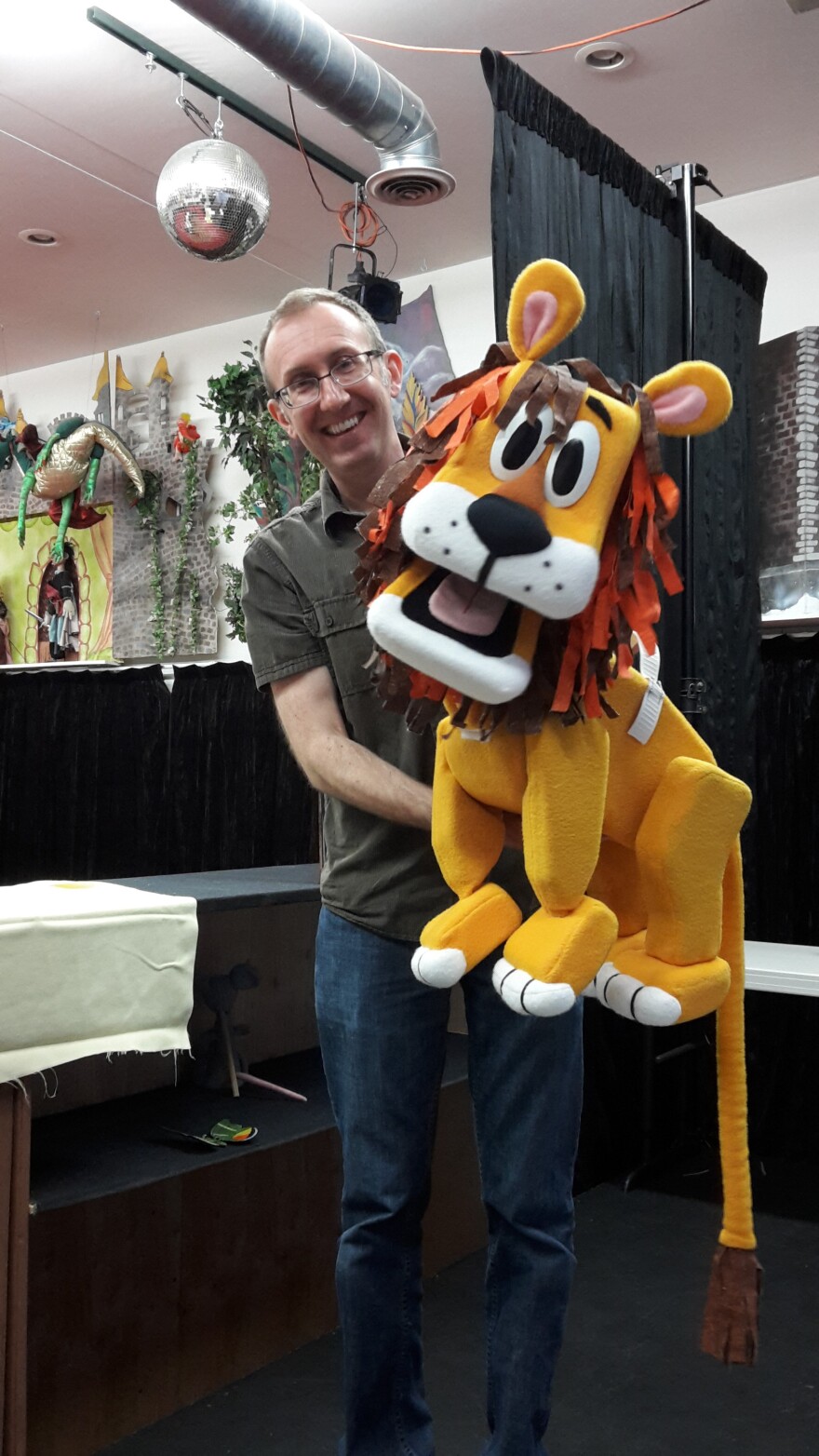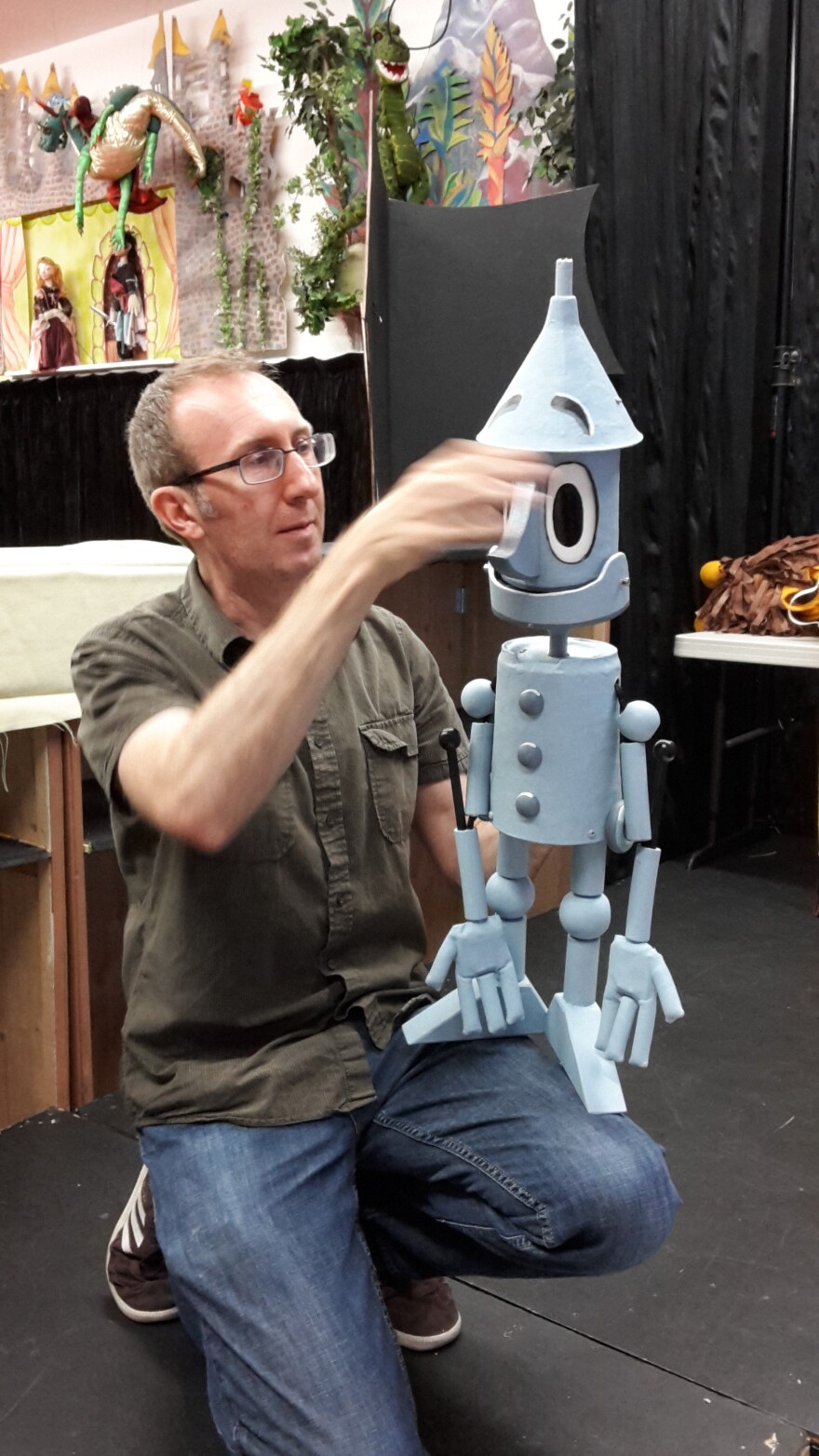People around here know Oz.
“Being in Kansas — holy crap — we just get inundated," says Matt Hawkins, the puppet designer for Paul Mesner Puppet Theater’s production of The Wizard of Oz. "Every truck stop is full of Wizard of Oz.”
So why would Mike Horner, the company's artistic director, bother with yet another production of the story?
“We look for titles people want to see and are familiar with. So, The Wizard of Oz, everybody knows it. And it lends itself well to adaption in puppetry," Horner says. "When you can make a Tin Man that looks robotic and obviously isn’t some guy in a shiny suit, that’s part of the magic of puppetry.”
“What’s funny," Hawkins adds, "is that when he (Horner) told me we were doing The Wizard of Oz, I couldn’t have thought of a better thing to do because of all the strong characters and so many different types of characters: you got an animal, a little girl, a robot — I thought it was great.”

Hawkins is a Kansas City paper sculptor who has created 3-D cardboard Star Wars puzzles for Costco and high-end art for Walt Disney World galleries. This was his first foray into puppet design.
It helped that Horner and Alex Espy, the theater's educational director, adapted their version of the story from L. Frank Baum's original book, The Wonderful Wizard of Oz, which was published in 1900 and is less familiar to most people than MGM’s 1939 movie.
“I really fell in love with the original illustrations in the original book,” Hawkins says. “There’s a lot of humor in those original illustrations. Lion sits like a dog. I just love that. Here’s this giant lion next to a little girl and he’s sitting there like this funny little puppy dog.”
So, that's the type of Cowardly Lion they created.
Also, in Baum's book, the Wicked Witch of the West is not green and does not wear a pointy hat — in fact, she wears an eye patch. Furthermore, Dorothy’s magic slippers are silver, not ruby.

The Paul Mesner production team understands that people will come to their show with movie-based expectations. Horner says even the actresses they auditioned for Dorothy read as Judy Garland. But, he says, in the book, Dorothy Gale is a little girl — just five or six years old.
But their hour-long adaptation is a frame story, Espy says.
“The premise is that the audience is at the Kansas City Public Library with a storm approaching and, for safety purposes, they go to shelter. While they are in shelter they decide to tell a story to pass the time.”
So audience members enter the show and are immediately made to understand they are library patrons who are in the basement. Three actors play the library’s janitor, a class chaperone and a librarian, while also serving as puppeteers.
Which means that once they begin telling the story of Oz, they only have three sets of hands for four main characters, plus all the characters the four meet along the way.
Toto was cut from the story for this reason. Also, there’s no singing, though Horner did toy with the idea.
“For me the freshness has come from Matt’s designs,” Horner says. “That’s been a big thing for me: creating these versions of iconic characters that don’t look anything like a version of them you’ve seen before.”

Because most of Hawkins’ drawings involved geometric shapes, Horner was able to craft many of the bodies out of found objects. The Munchkins’ bodies are plastic megaphones, the flying monkey’s mouth is a foam football and his body is a plastic bowling pin.
Hawkins had originally drawn the Wizard’s head in the shape of a light bulb — they only later realized that the shape is also that of a hot air balloon, which Horner says worked out nicely since the Wizard arrives and departs in a hot air balloon.
Through all their changes, the heart of the story has remained untouched.
“Everyone Dorothy meets thinks they’re lacking something," Horner says. "But all throughout their journey together they’re displaying the thing they think they lack: Scarecrow’s coming up with ideas. Tin Man’s showing compassion. Lion is brave. And Dorothy had the power to go home all along."
Which is what's made the story so suitable for telling over and over and over.
“You may think you’re lacking something," Horner notes, "but you’ve got it inside of you.”
The Paul Mesner Puppet Theater's The Wizard of Oz, June 20 through July 9 at Musical Theater Heritage at Crown Center, 2450 Grand Blvd, Suite 301, Kansas City, Missouri, 64108.
Follow KCUR contributor Anne Kniggendorf on Twitter, @annekniggendorf.



